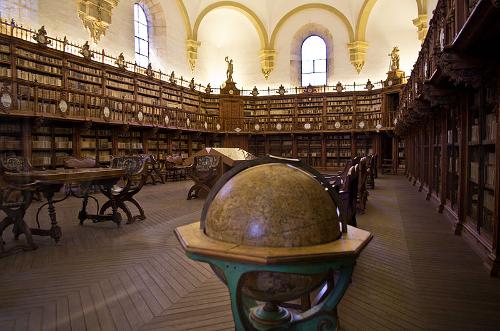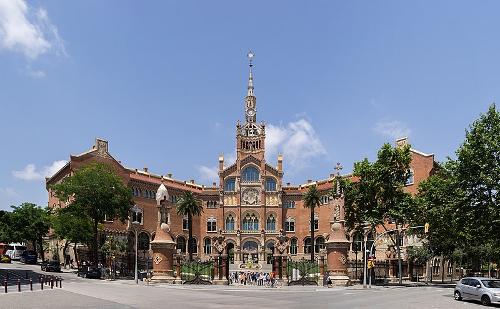LA GOMERA
Society

Society
Popular destinations SPAIN
| Andalusia | Catalonia | Costa blanca |
| Costa brava | Costa del sol | El hierro |
| Formentera | Fuerteventura | Gran canaria |
| Ibiza | La gomera | La palma |
| Lanzarote | Mallorca | Menorca |
| Tenerife |
Society
State structure
In 1821, the Canary Islands became a province of Spain with Santa Cruz de Tenerife as its capital. Since 1927, the archipelago has been divided into two provinces: Santa Cruz de Tenerife with the four western islands of Tenerife, La Palma, La Gomera and El Hierro, also called "Canarias Occidennales".
The province of Las Palmas de Gran Canaria consists of the three eastern islands of Gran Canaria, Fuerteventura and Lanzarote, also called "Canarias Orientales".
Since 1983, the two provinces have been united in the Autonomous Region of the Canary Islands or 'Comunidad Autónoma de Canarias'. The Canary Islands are then granted limited autonomous status and a regional constitution. The parliament has sixty members, equally divided between both provinces. The Canarian Parliament includes 15 members from Gran Canaria, 15 from Tenerife, 8 from La Palma, 8 from Lanzarote, 7 from Fuerteventura, 4 from La Gomera and 3 from El Hierro.
The civil administration of the island is based in the capital San Sebastián de La Gomera and La Gomera, like all the other islands, has an island council, the 'Cabildo Insular'.
The Canary Islands are represented in the Spanish Parliament with 14 of the 350 seats and in the Senate with 11 of the 255 seats. Each island is divided into municipalities ('municipios') headed by a mayor ('alcalde') who sits in the 'ayuntamiento', the town hall. In total there are 77 municipalities; Tenerife has the most with 31 municipalities, El Hierro the least with 2, La Gomera has 6. For the current political situation in Spain see chapter history.
Education
 Library of the University of Salamanca, SpainPhoto: Antoine Taveneaux CC 3.0 Unported no changes made
Library of the University of Salamanca, SpainPhoto: Antoine Taveneaux CC 3.0 Unported no changes made
Education in Spain has long lagged behind the rest of modern Europe. Especially the countryside, where the distances are great and the connections were poor, had a large number of illiterate people. The money spent on education also contrasted sharply with other countries in Europe. The change started from 1962 under the Franco regime. In barely fifteen years, the budget for education has increased by 100%. Illiteracy, especially among the elderly, was tackled by the Servicio de Educación Permanente de Adultos. This organization provides lower education courses for the elderly. Moreover, control over education is in the hands of the autonomous governments. Distance education, the Educación de Distancia ", also ensures that more and more people can make use of the education system, and that applies to primary to university education. In 1999 more than 130,000 people followed university education in this way through the Universidad Nacional de Educación de Distancia, which even has branches abroad.
One-third of the pupils attend private schools owned by private or religious people. Most of these schools are 100% funded by the government. They are then obliged to have a school board and in principle to admit any student. Education at the state schools is free.
According to the new education law of 1990, the Ley Orgánica de Ordenación General del Sistema Educativo (LOGSE), there are the following school types in Spain:
First of all, the Educación Infantil, pre-school and kindergarten. This non-compulsory education consists of a three-year or six-year cycle.
This is followed by Educación Primaria, the primary education that is provided from six to twelve years of age and is compulsory. There are three cycles of two years each with a number of compulsory and a number of optional subjects. The introduction of a foreign language is already started in group three.
Compulsory secondary education is the Educación Secundaria Obligatoria (ESO), from 12 to 16 years old, after which compulsory education ends. The ESO has two two-year cycles. The second cycle contains most of the courses taught in the first cycle, supplemented with a number of electives that increase to 30%.
After the ESO, the pupils receive a certificate that gives access to the "Bachillerato". One can also study in vocational training.
The Bachillerato gives access to the university. One gets compulsory core subjects and subjects of the direction one chooses: engineering, art, natural sciences or social sciences. In addition, there are again a number of electives.
Secondary vocational education, the Formación Profesional Grado Medio, is not very popular in Spain. It takes an average of about two years and the students, in addition to general subjects, mainly receive vocational subjects.
Higher professional education or Formación Profesional Grado Superior can be followed with a Bachillerato diploma.
University education is divided into three cycles:
After the first three years one is "Diplomado" and with that obtained diploma the second cycle can be followed, which lasts two years. One is then a "Licenciado", roughly comparable to "master's degree". After this one can continue studying for the title of "Doctor".
Spain currently has 62 universities, 19 of which are private. The University of Salamanca is the oldest in Spain and dates back to 1218. The Universidad Complutense of Madrid/ Alcalá is one of the largest in the world with more than 100,000 students. Other major universities are those of Barcelona, Valencia, Seville, Granada and País Vasco. The number of university students has doubled in ten years to more than 1.5 million in 1999.
The University of Las Palmas ('Universidad de Las Palmas de Gran Canaria') was founded in the period 1989-1990. On 26 April 1990, the university was officially recognised by the Canary Assembly. The university merged with the already existing Polytechnic University and the different university centres were subsequently distributed throughout the archipelago. The university now consists of 19 centres, some of which are over a hundred years old. Las Palmas has four campuses: Tafira, Obelisco, San Cristóbal and Montaña Cardones.
Healthcare
 Hospital Sant Pau, Barcelona, SpainPhoto: Thomas Ledl CC 4.0 International no changes made
Hospital Sant Pau, Barcelona, SpainPhoto: Thomas Ledl CC 4.0 International no changes made
In Spain, a lot of money is traditionally spent by the government on healthcare. A number of autonomous regions regulate healthcare themselves. The Compulsory Health Insurance, set up in 1942, was very inadequate, and it was only after the Seguridad Social was set up in 1966 that much changed for the better. In 1971, 75% of the population was already covered by this scheme and by 1982 that percentage had already risen to 86%. In 1986 the Ley General de Sanidad was adopted, making it possible to house the entire population in the Sistema Nacional de Salud, the National Health System. From 1991, 99% of the Spanish population is covered by this system. There are plans to privatize this scheme.
Spain also has a large number of private clinics. Approx. 25% of medical care is provided in private clinics and other private institutions.
Due to the much improved medical care, it is currently among the best in the world. The life expectancy of the population is therefore very high and the infant mortality is very low. The number of doctors per 1000 inhabitants and the number of organ transplants per million inhabitants are also among the highest in the world.
Typical for the Canary Islands
LUCHA CANARIA
Lucha Canaria is a Canarian 'Guanche' wrestling sport practised only in these islands. Twelve wrestlers ('luchadores') from two teams compete in pairs in a circle (15 metres in diameter) delimited by sawdust. The aim is to bring the opponent to the ground within three minutes, using 43 prescribed holds. The loser is the person who has touched the ground twice with a part of his body other than his feet. Whoever wins two out of three matches wins.
GOFIO
Gofio is the oldest surviving staple food of the Canarian primitive people. This highly perishable dish consisted of flour made from barley grains, but nowadays only from maize. Gofio is still sold in supermarkets, but is not so common on the menu in traditional restaurants.
Sources
Canarische Eilanden
Van Reemst
Evers, K. / Canarische eilanden : Tenerife, La Gomera, El Hierro, La Palma, Gran Canaria, Fuerteventura, Lanzarote
Gottmer,
Leibl, M. / Gomera & Hierro
Van Reemst
Lipps, S. / La Gomera
ANWB
Lipps, S. / Wandelgids La Gomera en El Hierro
ANWB
Murphy, P. / Canarische eilanden
Kosmos-Z&K
Renouf, N. / Canarische eilanden
Kosmos-Z&K
Rokebrand, R. / Reishandboek Tenerife
Elmar
Schulze, D. / La Gomera
Deltas
Simonis, D. / Tenerife & La Gomera
Kosmos-Z&K
Williams, C. / Tenerife, including La Gomera
Rough Guides
CIA - World Factbook
BBC - Country Profiles
Copyright: Team The World of Info